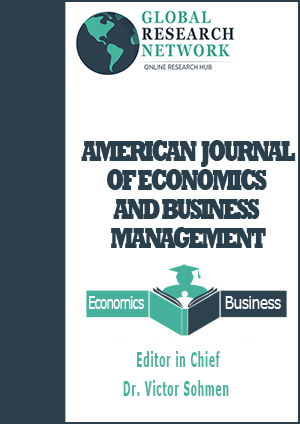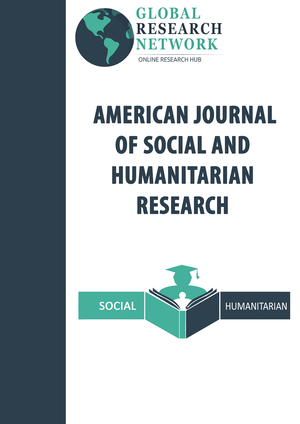The Decision Tree Aided Neuro-Fuzzy Inference Characterization of the Stochastic Hydrology of the Tana Alluvial Aquifer
Abstract
Keywords
Full Text:
PDFReferences
Aldino, A. A., & Sulistiani, H. (2020). Decision Tree C4. 5 Algorithm For Tuition Aid Grant Program Classification (Case Study: Department Of Information System, Universitas Teknokrat Indonesia). Jurnal Ilmiah Edutic: Pendidikan dan Informatika, 7(1), 40-50.
Alsalman, Y. S., Halemah, N. K. A., AlNagi, E. S., & Salameh, W. (2019, June). Using decision tree and artificial neural network to predict students academic performance. In 2019 10th International Conference on Information and Communication Systems (ICICS) (pp. 104-109). IEEE.
Azam, M. H., Hasan, M. H., Hassan, S., & Abdulkadir, S. J. (2020, October). Fuzzy type-1 triangular membership function approximation using fuzzy C-means. In 2020 International Conference on Computational Intelligence (ICCI) (pp. 115-120). IEEE.
Babanezhad, M., Masoumian, A., Nakhjiri, A. T., Marjani, A., & Shirazian, S. (2020). Influence of number of membership functions on prediction of membrane systems using adaptive network based fuzzy inference system (ANFIS). Scientific Reports, 10(1), 1-20.
Bardossy, A., Bogardi, I., & Duckstein, L. (1990). Fuzzy regression in hydrology. Water Resources Research, 26(7), 1497-1508.
Běhounek, L., & Cintula, P. (2006). From fuzzy logic to fuzzy mathematics: A methodological manifesto. Fuzzy Sets and Systems, 157(5), 642-646.
Bělohlávek, R., Dauben, J. W., & Klir, G. J. (2017). Fuzzy logic and mathematics: a historical perspective. Oxford University Press.
Chen, C. S., Jhong, Y. D., Wu, W. Z., & Chen, S. T. (2019). Fuzzy time series for real-time flood forecasting. Stochastic Environmental Research and Risk Assessment, 33(3), 645-656.
Dombi, J., & Jónás, T. (2020). Ranking trapezoidal fuzzy numbers using a parametric relation pair. Fuzzy sets and systems, 399, 20-43.
Dou, J., Yunus, A. P., Bui, D. T., Merghadi, A., Sahana, M., Zhu, Z., ... & Pham, B. T. (2019). Assessment of advanced random forest and decision tree algorithms for modeling rainfall-induced landslide susceptibility in the Izu-Oshima Volcanic Island, Japan. Science of the total environment, 662, 332-346.
Du, X., Xu, H., & Zhu, F. (2021). A data mining method for structure design with uncertainty in design variables. Computers & Structures, 244, 106457.
Gentili, P. L., Giubila, M. S., & Heron, B. M. (2017). Processing binary and fuzzy logic by chaotic time series generated by a hydrodynamic photochemical oscillator. ChemPhysChem, 18(13), 1831-1841.
Ghosh, A., & Maiti, R. (2021). Soil erosion susceptibility assessment using logistic regression, decision tree and random forest: study on the Mayurakshi river basin of Eastern India. Environmental Earth Sciences, 80(8), 1-16.
Gonoodi, K., Tayefi, M., Saberi-Karimian, M., Darroudi, S., Farahmand, S. K., Abasalti, Z., ... & Mobarhan, M. G. (2019). An assessment of the risk factors for vitamin D deficiency using a decision tree model. Diabetes & Metabolic Syndrome: Clinical Research & Reviews, 13(3), 1773-1777.
Jiang, J., Cui, B., Zhang, C., & Fu, F. (2018, May). Dimboost: Boosting gradient boosting decision tree to higher dimensions. In Proceedings of the 2018 International Conference on Management of Data (pp. 1363-1376).
Lan, T., Hu, H., Jiang, C., Yang, G., & Zhao, Z. (2020). A comparative study of decision tree, random forest, and convolutional neural network for spread-F identification. Advances in Space Research, 65(8), 2052-2061.
Lange, H., & Sippel, S. (2020). Machine learning applications in hydrology. In Forest-water interactions (pp. 233-257). Springer, Cham.
Mohebbi Tafreshi, G., Nakhaei, M., & Lak, R. (2021). Land subsidence risk assessment using GIS fuzzy logic spatial modeling in Varamin aquifer, Iran. GeoJournal, 86(3), 1203-1223.
Moorthi, P. V. P., Singh, A. P., & Agnivesh, P. (2018). Regulation of water resources systems using fuzzy logic: a case study of Amaravathi dam. Applied Water Science, 8(5), 1-11.
Nguyen, P. T., Ha, D. H., Nguyen, H. D., Van Phong, T., Trinh, P. T., Al-Ansari, N., ... & Prakash, I. (2020). Improvement of credal decision trees using ensemble frameworks for groundwater potential modeling. Sustainability, 12(7), 2622.
Nourani, V., Razzaghzadeh, Z., Baghanam, A. H., & Molajou, A. (2019). ANN-based statistical downscaling of climatic parameters using decision tree predictor screening method. Theoretical and Applied Climatology, 137(3), 1729-1746.
Pourabdollah, A., Mendel, J. M., & John, R. I. (2020). Alpha-cut representation used for defuzzification in rule-based systems. Fuzzy Sets and Systems, 399, 110-132.
Purba, R. A., Samsir, S., Siddik, M., Sondang, S., & Nasir, M. F. (2020, April). The optimalization of backpropagation neural networks to simplify decision making. In IOP Conference Series: Materials Science and Engineering (Vol. 830, No. 2, p. 022091). IOP Publishing.
Rezaei, F., Safavi, H. R., & Ahmadi, A. (2013). Groundwater vulnerability assessment using fuzzy logic: a case study in the Zayandehrood aquifers, Iran. Environmental management, 51(1), 267-277.
Roy, S., Mondal, S., Ekbal, A., & Desarkar, M. S. (2019). Dispersion ratio based decision tree model for classification. Expert Systems with Applications, 116, 1-9.
Sarda, K., Yerudkar, A., & Vecchio, C. D. (2020). Disturbance decoupling control design for Boolean control networks: a Boolean algebra approach. IET Control Theory & Applications, 14(16), 2339-2347.
Tangirala, S. (2020). Evaluating the impact of GINI index and information gain on classification using decision tree classifier algorithm. International Journal of Advanced Computer Science and Applications, 11(2), 612-619.
Tzimopoulos, C., Papadopoulos, K., & Papadopoulosc, B. (2016). Fuzzy regression with applications in hydrology. optimization, 5(8).
Wang, D., Li, Y., Wang, L., & Gong, B. (2020). Neural networks are more productive teachers than human raters: Active mixup for data-efficient knowledge distillation from a blackbox model. In Proceedings of the IEEE/CVF Conference on Computer Vision and Pattern Recognition (pp. 1498-1507).
Wang, Y., & Kong, T. (2019). Air quality predictive modeling based on an improved decision tree in a weather-smart grid. IEEE Access, 7, 172892-172901.
DOI: http://dx.doi.org/10.52155/ijpsat.v34.2.4658
Refbacks
- There are currently no refbacks.
Copyright (c) 2022 Meshack Owira Amimo, K.S.S. Rakesh

This work is licensed under a Creative Commons Attribution 4.0 International License.



















